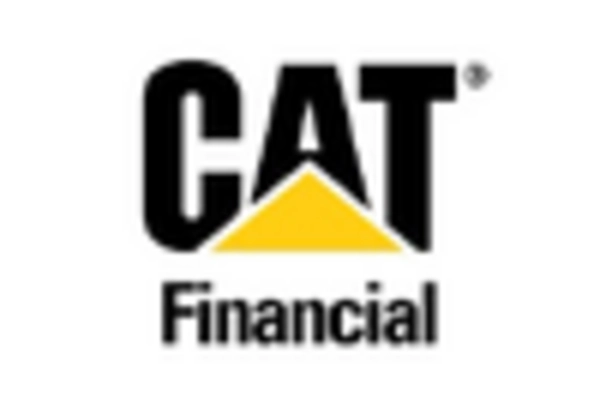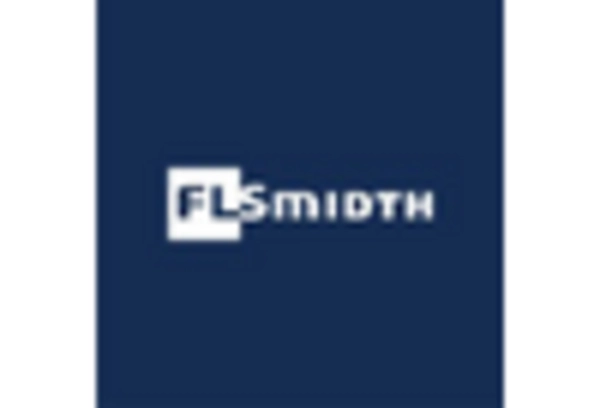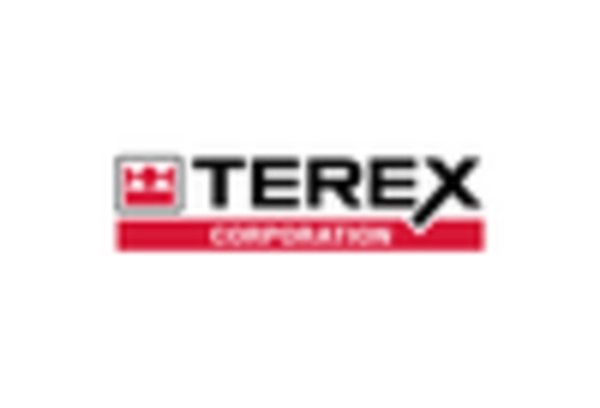Increasing Energy Demand
The rising The Coal Handling Equipment Industry. As economies expand, the need for reliable and efficient energy sources intensifies. Coal remains a significant contributor to energy generation, particularly in developing regions where infrastructure is still evolving. According to recent data, coal-fired power plants account for approximately 38% of the world's electricity generation. This persistent reliance on coal necessitates advanced handling equipment to ensure efficient transportation, storage, and processing. The Coal Handling Equipment Market is thus poised for growth as utilities and industrial sectors invest in modernizing their coal handling systems to meet increasing energy requirements.
Technological Innovations
Technological innovations are reshaping the Coal Handling Equipment Market. The advent of automation and digitalization in coal handling processes is enhancing efficiency and reducing operational costs. Equipment such as automated stackers, reclaimers, and conveyor systems are becoming increasingly prevalent, allowing for seamless coal transportation and management. Moreover, the integration of IoT and data analytics in coal handling operations enables real-time monitoring and predictive maintenance, further optimizing performance. As industries seek to improve productivity and reduce downtime, the demand for technologically advanced coal handling equipment is expected to rise, thereby propelling the Coal Handling Equipment Market forward.
Infrastructure Development Initiatives
Infrastructure development initiatives across various regions are propelling the Coal Handling Equipment Market. Governments are investing heavily in energy infrastructure to support economic growth and energy security. For instance, the construction of new coal-fired power plants and the expansion of existing facilities require sophisticated coal handling systems. This trend is particularly evident in regions where coal is a primary energy source. The market for coal handling equipment is projected to grow as these initiatives create demand for efficient and reliable equipment. Furthermore, the integration of advanced technologies in coal handling processes enhances operational efficiency, thereby attracting investments in the Coal Handling Equipment Market.
Regulatory Compliance and Safety Standards
Regulatory compliance and safety standards are increasingly influencing the Coal Handling Equipment Market. Governments and regulatory bodies are implementing stringent safety regulations to mitigate risks associated with coal handling operations. This has led to a heightened demand for equipment that meets these safety standards, ensuring the protection of workers and the environment. Companies are compelled to invest in advanced coal handling technologies that not only comply with regulations but also enhance operational safety. The market is likely to see a surge in demand for equipment that incorporates safety features, thereby driving growth in the Coal Handling Equipment Market.
Environmental Considerations and Emission Controls
Environmental considerations and emission controls are becoming critical drivers for the Coal Handling Equipment Market. As concerns over climate change and air quality intensify, there is a growing emphasis on reducing emissions from coal handling operations. This has led to the development of equipment designed to minimize dust and other pollutants during coal handling processes. Companies are increasingly adopting technologies that comply with environmental regulations, which in turn drives the demand for advanced coal handling equipment. The market is likely to witness growth as industries invest in solutions that not only enhance operational efficiency but also align with sustainability goals, thereby influencing the Coal Handling Equipment Market.


















Leave a Comment